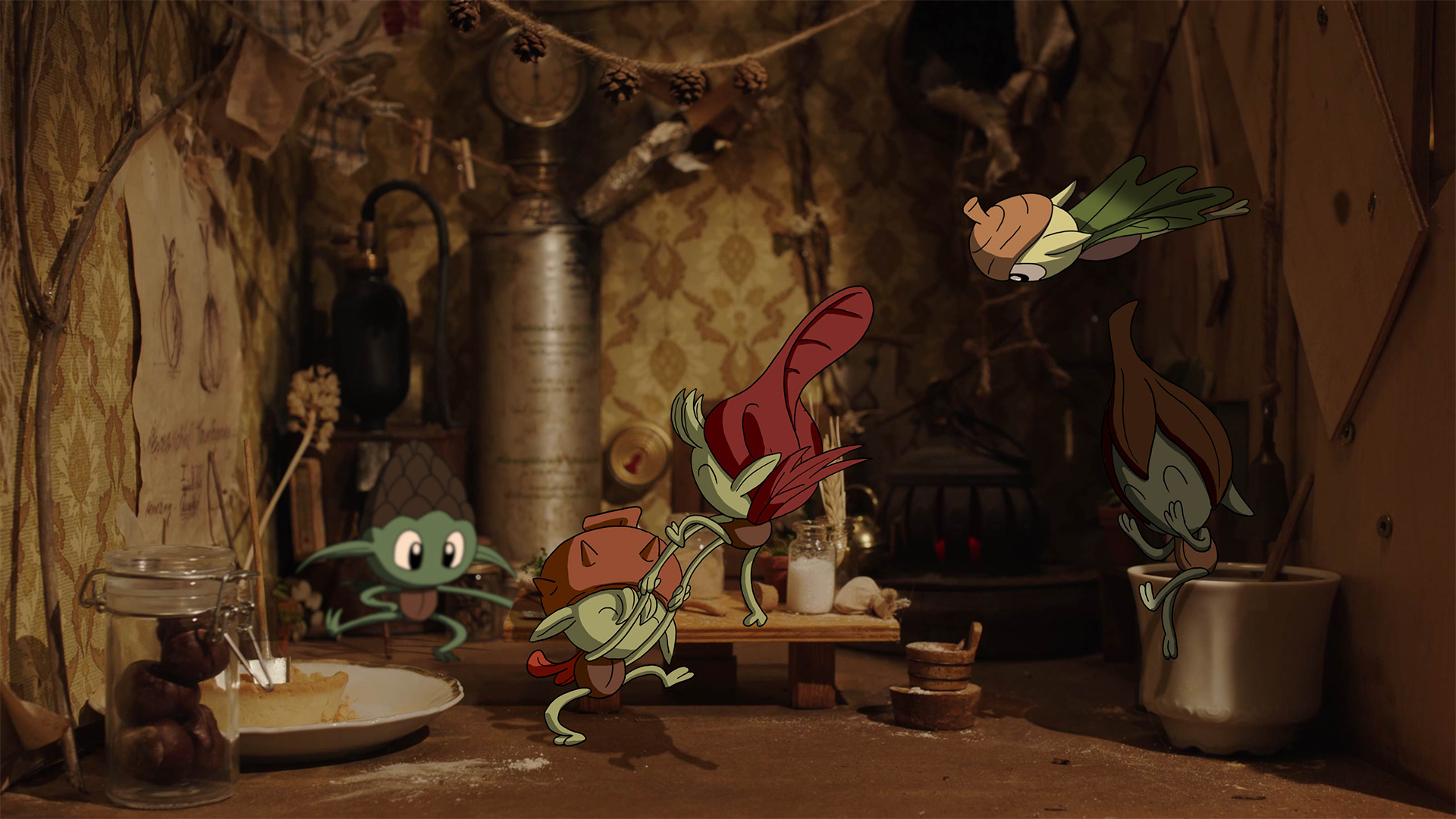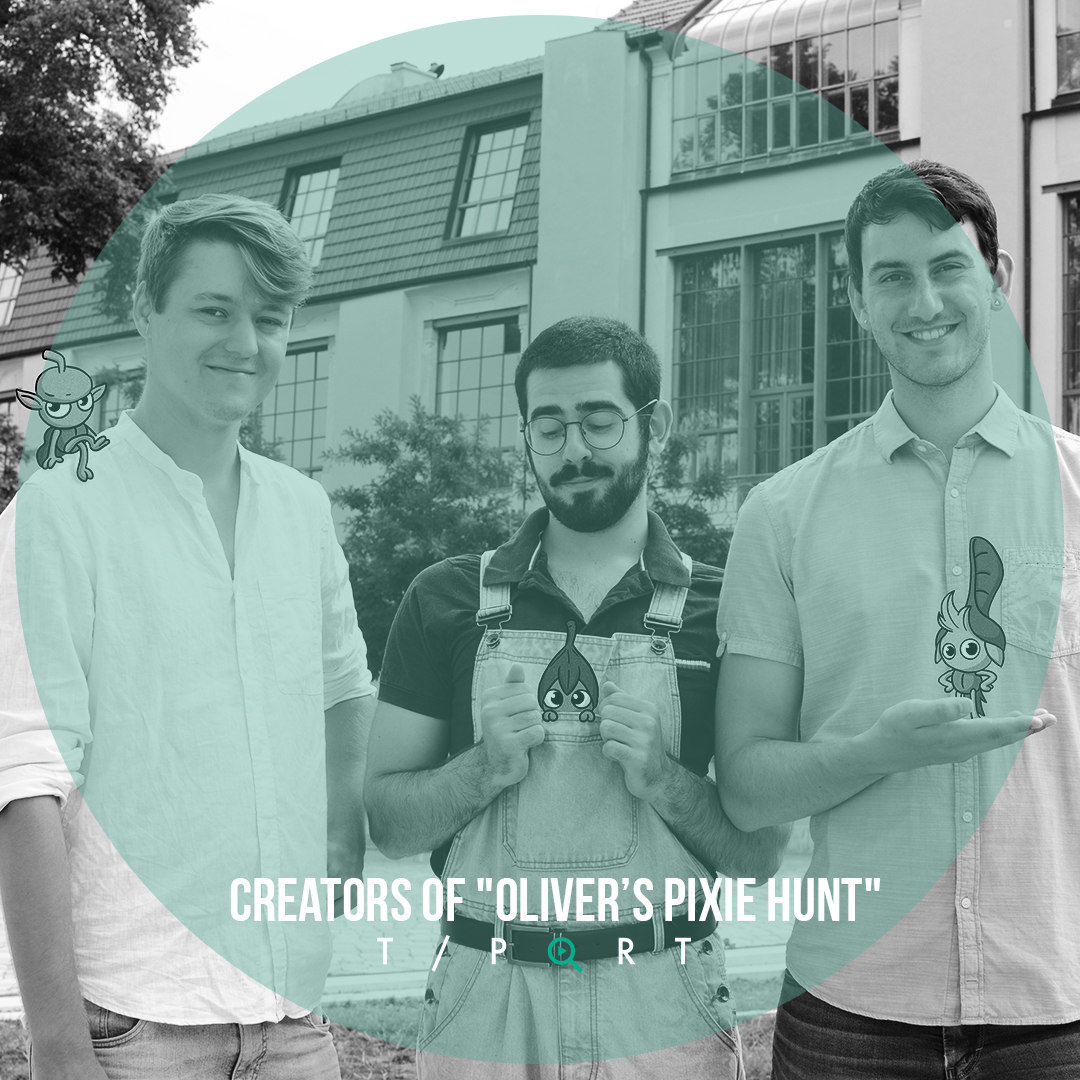
This is a special edition of T-Port Filmmaker Spotlight – this time we got a chance to talk to three emerging filmmakers who collaborated to create one of T-Port’s most enchanting titles, the German hybrid short, “Oliver’s Pixie Hunt” (“Oliver auf Kammerjagd”), which is presented in our partner’s Bauhaus University Weimar catalogue.
The film, a universal fable, follows Oliver, which isn’t keen on getting to know his new hometown – until he meets Fiona, the city’s magical pest controller. As they deal with wacky Thuringian fairytale creatures and eccentric locals together, Oliver learns that any place can become home. We had the chance to speak with the film’s co-directors and DoP, to hear more about their elaborate working process, their inspiration for creating the film and their future plans in the cinema world.
Hi guys! Tell us a little bit about yourselves.
We – Ivan Djambov (23 years old), Mirko Muhshoff (27 years old) and Kai Zwettler (28 years old) – met at Bauhaus University in Weimar while studying “Media Arts and Design”. Our passion for animation and children’s films brought us together immediately and we collaborated on many university and commercial projects ever since. Mirko and Kai co-wrote and co-directed “Oliver’s Pixie Hunt” and worked with Ivan as our DOP. While Mirko edited the film, Kai took care of the animated elements.
Kai: In my work, I generally enjoy combining live-action and animation. My stories are equally influenced by my upbringing in a small town and my time working and studying in Wuhan, Hong Kong and New York.
Mirko: During my studies in Weimar and Marseille, I mainly focused on script work and acting. Currently, I’m working as a presenter at a cinema magazine.
Ivan: I initially also worked on animation projects at uni, but I later changed my focus and I am now working as a cameraman.
While working on your film, where did you draw your inspiration from?
Kai: Our primary source of inspiration was the more or less obscure world of Thuringian myths and fairy tales. We skimmed through hundreds of stories and chose interesting details, characters, and wacky creatures that we mixed and matched quite freely to create or own unique story universe. We also went on countless idyllic touristy bike trips through the two Thuringian small towns that later became our filming locations and imagined little scenes and situations around specific landmarks that caught our attention. And yes, we admit that we re-watched all the Studio Ghibli films many times.
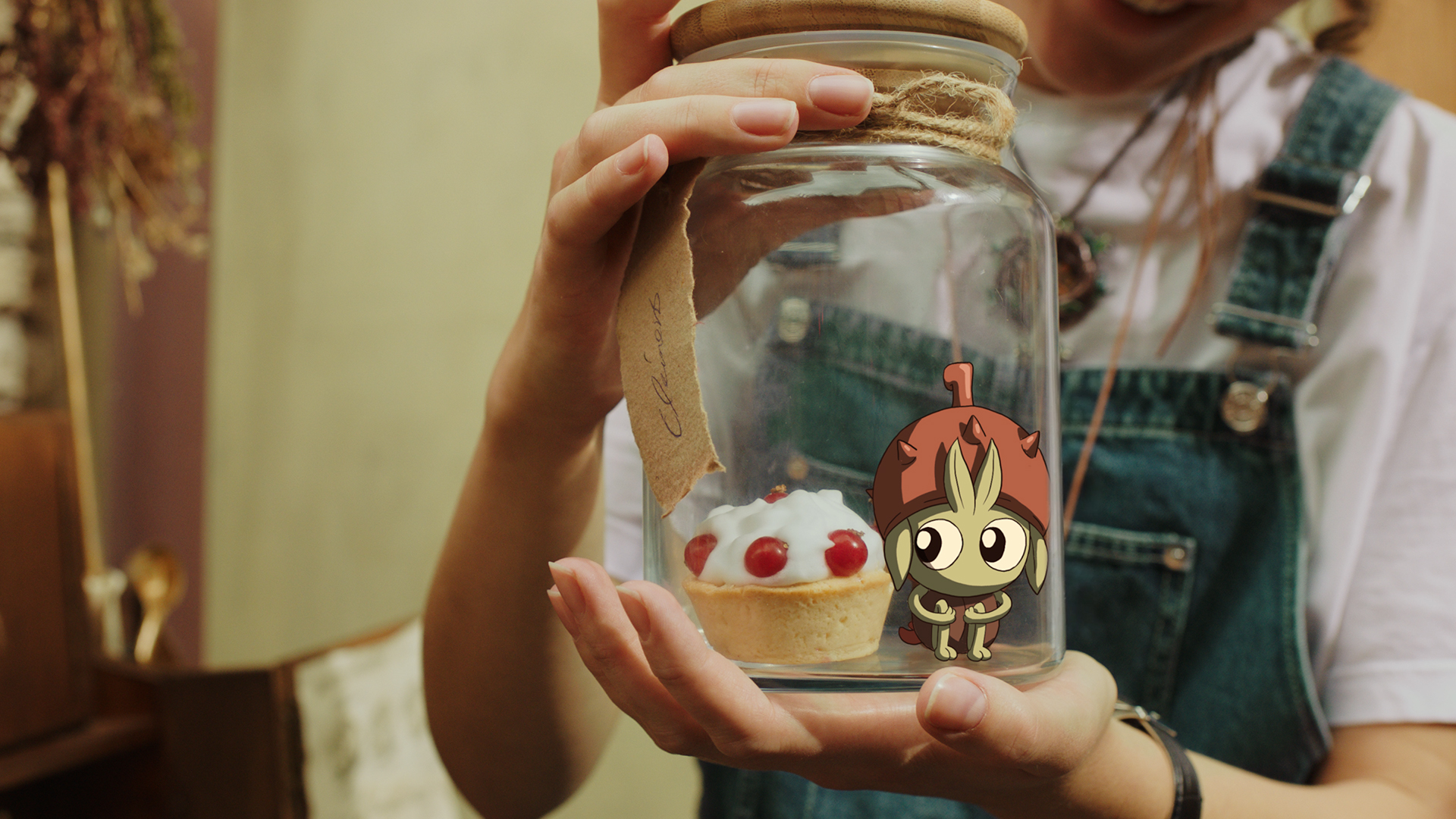
Tell us about a filmmaker that you admire and why?
Mirko: In the context of children’s films, Hayao Miyazaki was a big influence on our work. The elegant simplicity of the stories, the immersion through uncluttered images and the ultra-positive naivety of the narrative was something we also wanted to achieve in our film. Beyond that, Miyazaki’s discipline and drive to create is truly admirable.
Ivan: Julia Ducournau is currently one of my favourite directors. Her intense and horrifying movies create weird yet satisfying goosebump moments.
Can you tell us about your first encounter with cinema – do you recall your first memory from watching a film?
Kai: The first film viewing experience I consciously (and vividly) remember was when we had a screening of Disney’s “Snow White” in kindergarten. The scene of Snow White fleeing into the woods scared the crap out of me, and while everyone else was glued to the screen, I just stomped outside crying and vowed to never watch a Disney fairytale film ever again. I’m glad that phase didn’t last all that long.
Mirko: The first time I visited a movie theater was at a theme park. It was one of those stereoscopic 3D cinemas where something is constantly being thrown in the viewers’ faces. It took me a while to understand that cinema can be more than just a roller coaster ride.
Ivan: A movie experience in my childhood that still sticks with me was when I watched “Mr Bean’s Holiday” the first time. I remember that I never thought “what a great movie” but it just fit the mood – it was summer, it was warm and my mom surprised me with a cinema ticket after school. This memory feels so carefree and reminds me of a laid-back childhood.
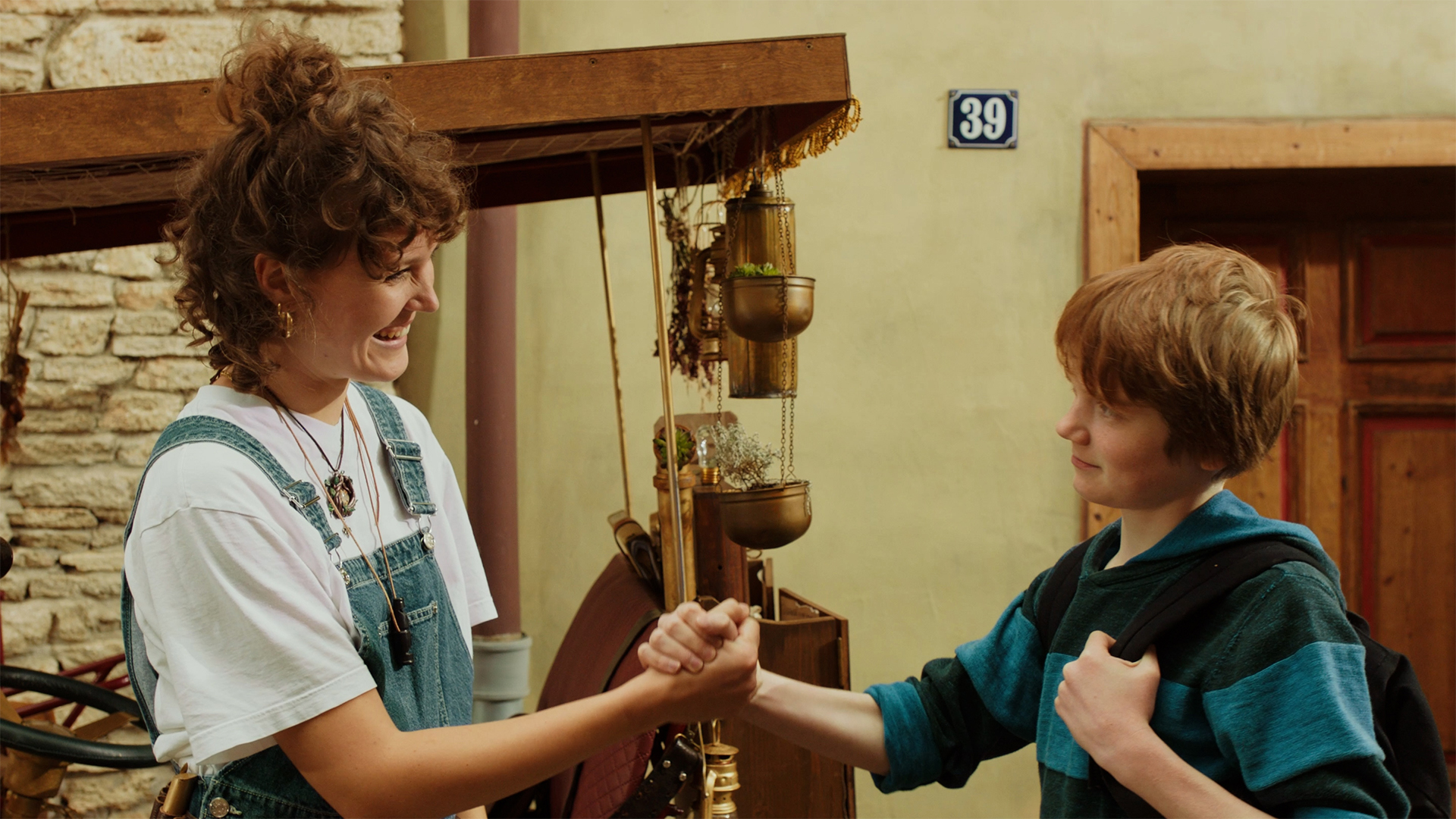
Next to filmmaking, what do you consider as your passions in life?
Kai: Before the whole Corona situation started, I had a big passion for travelling and experiencing different cultures. The months and years I spent in different international megacities were among the best and most inspiring episodes of my life so far. And besides that, I’m really fascinated by all kinds of animals and plants – especially the weird and extravagant ones.
Mirko: Besides the obvious – going to the movies, watching series and talking about them a lot – it’s literature, music, video games and foreign languages. But also long well as well as getting to know new cities is important to me.
Ivan: My biggest passion besides filmmaking is DJing. To dive into the world of electronic music and its historical background inspires me a lot.
Do these passions influence your filmmaking, are there any connections?
Kai: On the one hand, my time in all those big diverse cities sparked a desire to encourage openness towards different lifestyles and the “Other” with my films – and on a purely aesthetic level, the auspiciously blinking neon lights tend to seep into my work again and again. On the other hand, my fascination for animals at one point transformed into the wish to create my own designs and bring them to life with animation. Our thesis film in particular offered the perfect opportunity to experiment with some fun designs loosely inspired by local fairytales.
Mirko: The discoveries of our filming locations in the countryside have all come from leisurely excursions. In this respect, our touristy enthusiasm for beautiful house facades and backyards was also very helpful for location scouting and combined the pleasant with the practical.
Ivan: Unfortunately, I never made a movie about electronic music or involved the music that I love so much. But hopefully, I will find the perfect moment later in my career.
How did you first start working on this film? What was the process like and what first sparked the idea to make this film?
Kai: Mirko defined the first basic building blocks of our film that he came up with on one of his weekend excursions: a small-town adventure that brings together elements from local myths and fairytales as well as some inspiration from the iconic Japanese Anime films we all enjoyed as children. Mirko and I then experimented with dozens of different screenplay ideas until we finally settled on a rough version of our future film that Mirko wrote in one fell swoop one early summer afternoon. While Mirko took care of the story arc, I focused on refining the scenes that contained animated elements. At this point, Ivan also joined in, so we could develop the film’s visual style together.
Tell us a bit about your film and the filmmaking process – what were your main insights?
Mirko: The biggest realization during the shoot was certainly that working with child actors requires a different kind of communication than working with adults. In this context, clear procedures were often more helpful than discussing emotional motivations. The latter then came naturally during the shoot.
Kai: As I worked with both real actors and later a team of animators for this film, I realized more than ever that there are certain similarities in directing the two. Animators have to painstakingly “act out” the movements of their animated characters, so it’s as crucial for them as for our actors to be provided with a detailed understanding of their character’s motivation and the scene’s dramaturgy.
Ivan: From a DOP’s perspective, there were two interesting insights: first, our detailed storyboard was an excellent way to prepare our strictly timed shoot and helped the whole crew understand upcoming shots. And this shoot really made me appreciate the comfort of having a director’s viewfinder around. You can find the perfect framing without moving the camera a thousand times, so this improved the quality of our images and saved time.
What were the biggest challenges you encountered during making your film?
Mirko: Staging the sequences into which the animated beings would later be inserted was a challenge, on the one hand for the set design and the camera, and on the other hand for the acting. The young actors had to react authentically to a being that was not there. Thus, each time a team member had to act out the movement sequences with a small toy figure, and the actors had to imagine the finished scene.
Ivan: Another big challenge was the huge number of locations that we had to cover in just ten days of shooting. Plus, many sets were out in the open and the late summer weather could be quite unpredictable at times. Thankfully, our rain radar was always on point and the crew worked together really well when it suddenly started pouring.
Kai: And to address the aerosols in the room – of course shooting a student film during the corona pandemic posed quite a unique challenge as well. We had the great luck of scheduling our shoot right in between the very first and the second lockdown, so at least we were able to work together as a team. Still, many hotels and other service providers were closed back then, so such basic things as finding a place for our crew to stay became unexpected hurdles.
How was it to collaborate with your cast and crew? Have you formed any particular meaningful connection with someone from the crew you would like to share?
Mirko: Especially the work with our child actors was a great enrichment. In every scene we were impressed by their great understanding of the subtexts; they seemed to know more about the characters than we did. In addition, they had a very intuitive knowledge of how movies work. They saw through the meaning of different shot sizes and automatically adjusted their acting.
Ivan: To shoot multiple days in a row with the same crew and no off days was very exhausting. Luckily, everyone had such a good mood that we became a little family while we were shooting the movie.
Kai: Those ten days really did feel like a very challenging yet magical summer camp. The whole crew stayed at the same bunch of summer cottages, so after every long day of shooting, we could always enjoy a little bit of summer night air together. So even though everyone was giving their best and we all had to work hard to stay on schedule, the whole shoot had a cozy friends-on-summer-vacation vibe to it – maybe even more so because most conventional summer trips had been cancelled anyway due to the pandemic.
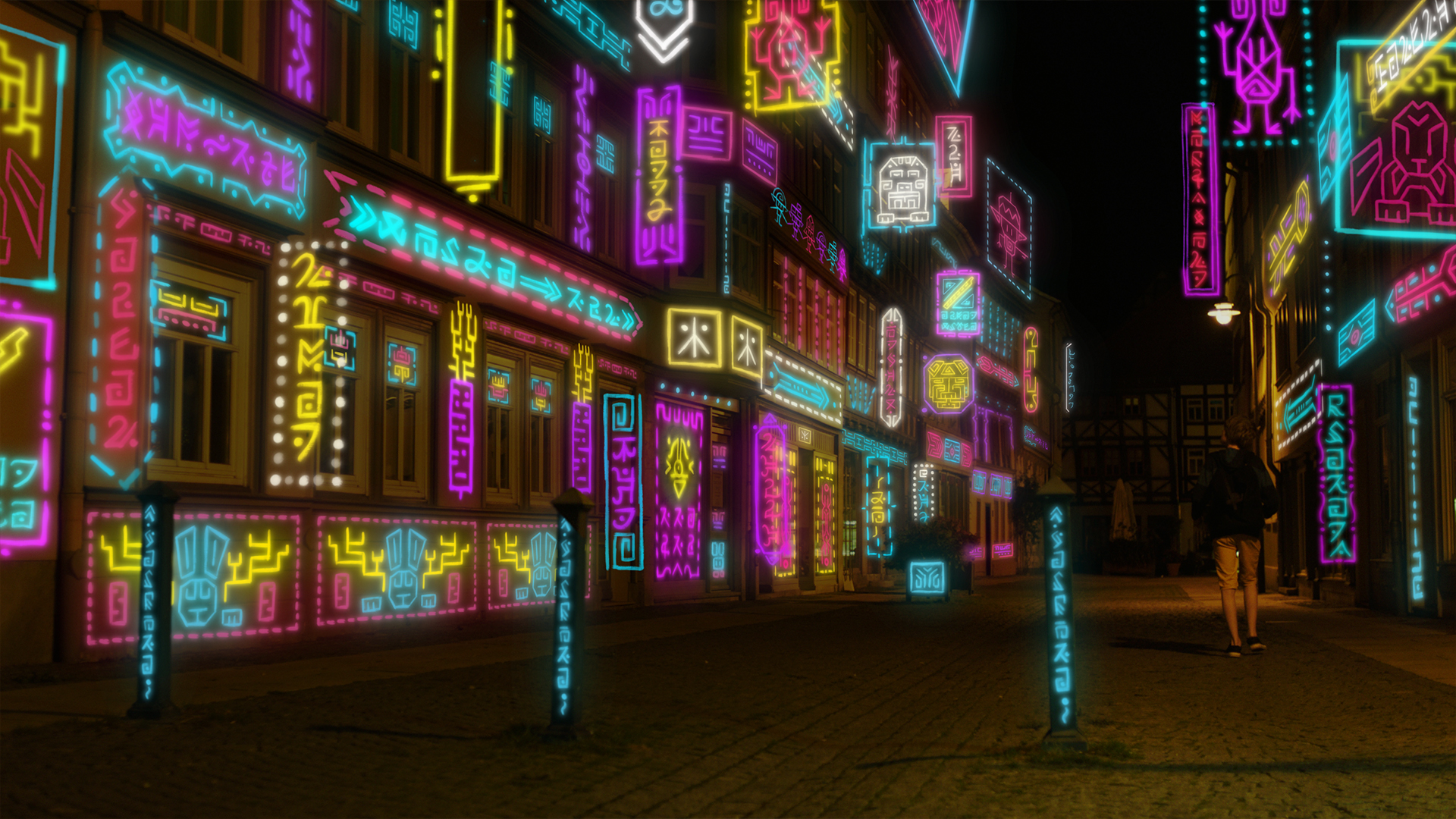
Tell us about the sound choices in the film – what type of score did you use and why?
Tell us about the visual choices you made with your crew. What were your main goals and techniques in creating the visual style of your film?
Mirko: The camera concept called for clear, static shots. On the one hand, this made it easier to incorporate the animation elements, and on the other, it gave the viewers a geographical understanding of the locations. After watching the film, the audience should be able to draw a floor plan of the apartment. This was supposed to make the action feel even more immediate and captivate the viewers. In addition, for our “summer film” we relied on warm, pleasant colors.
Kai: One of the most distinguishing features of our film is probably also the combination of live-action and 2D animation. Even though this technique is rarely used nowadays, we felt it would add to the nostalgic, laid-back look of the film and bring out the otherness of our magical creatures and elements. Those creatures are part of our small town universe, but they still follow their own rules and don’t have to adhere to all the laws of the physical world.
If you had to summarize your film in three words, what would they be?
Ivan: Between Two Worlds.
Mirko: Summer. Solitude. Surreal.
Kai: Nostalgic. Magical. Cozy.
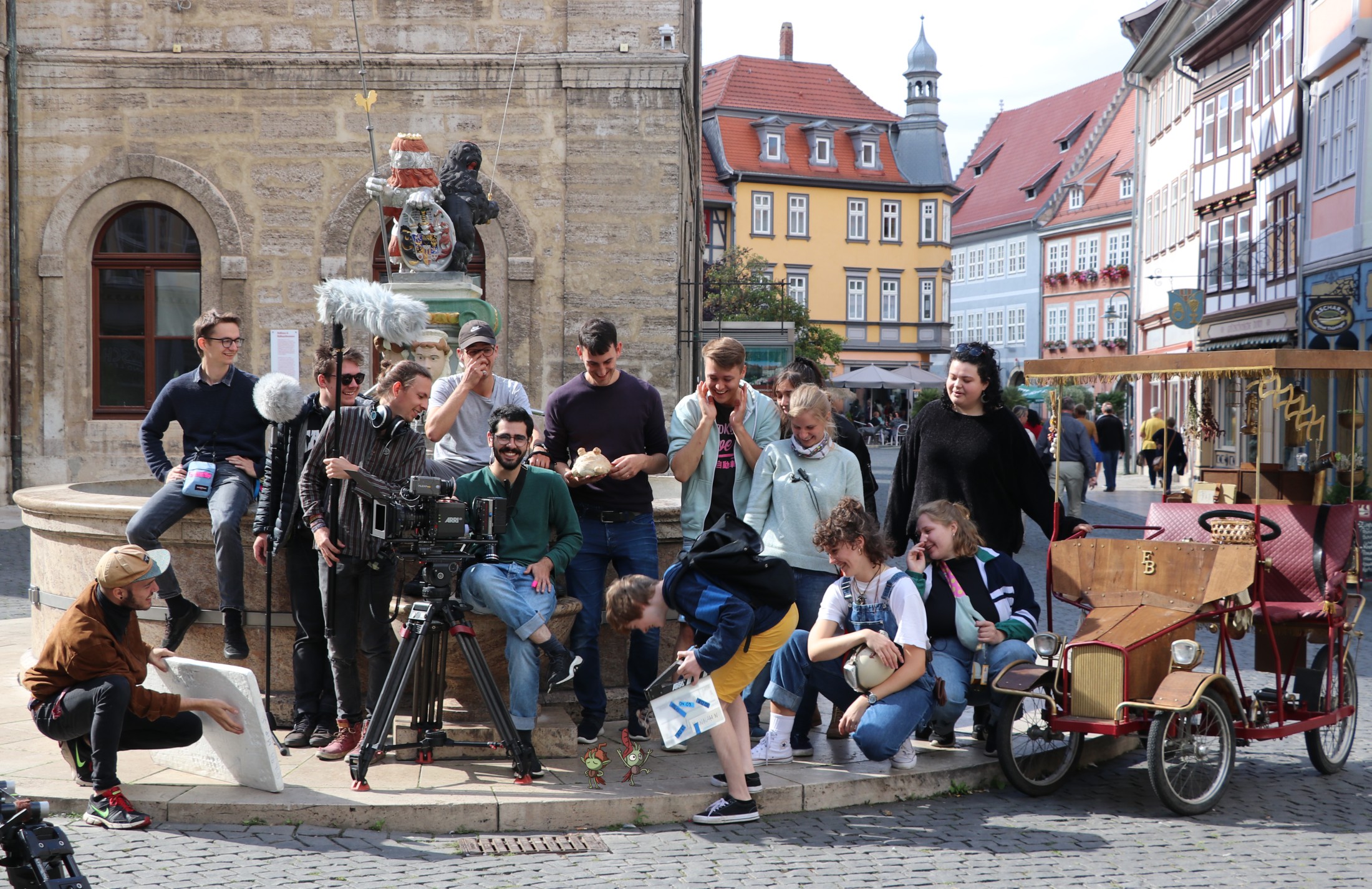
What would you like people to take away from your film?
Kai: With our film, we especially want to encourage our young audience to face big life changes like moving to a new place openly and without fear. We hope that, just like our protagonist Oliver, our viewers get the feeling that any place can become home, no matter how strange and wacky its residents are.
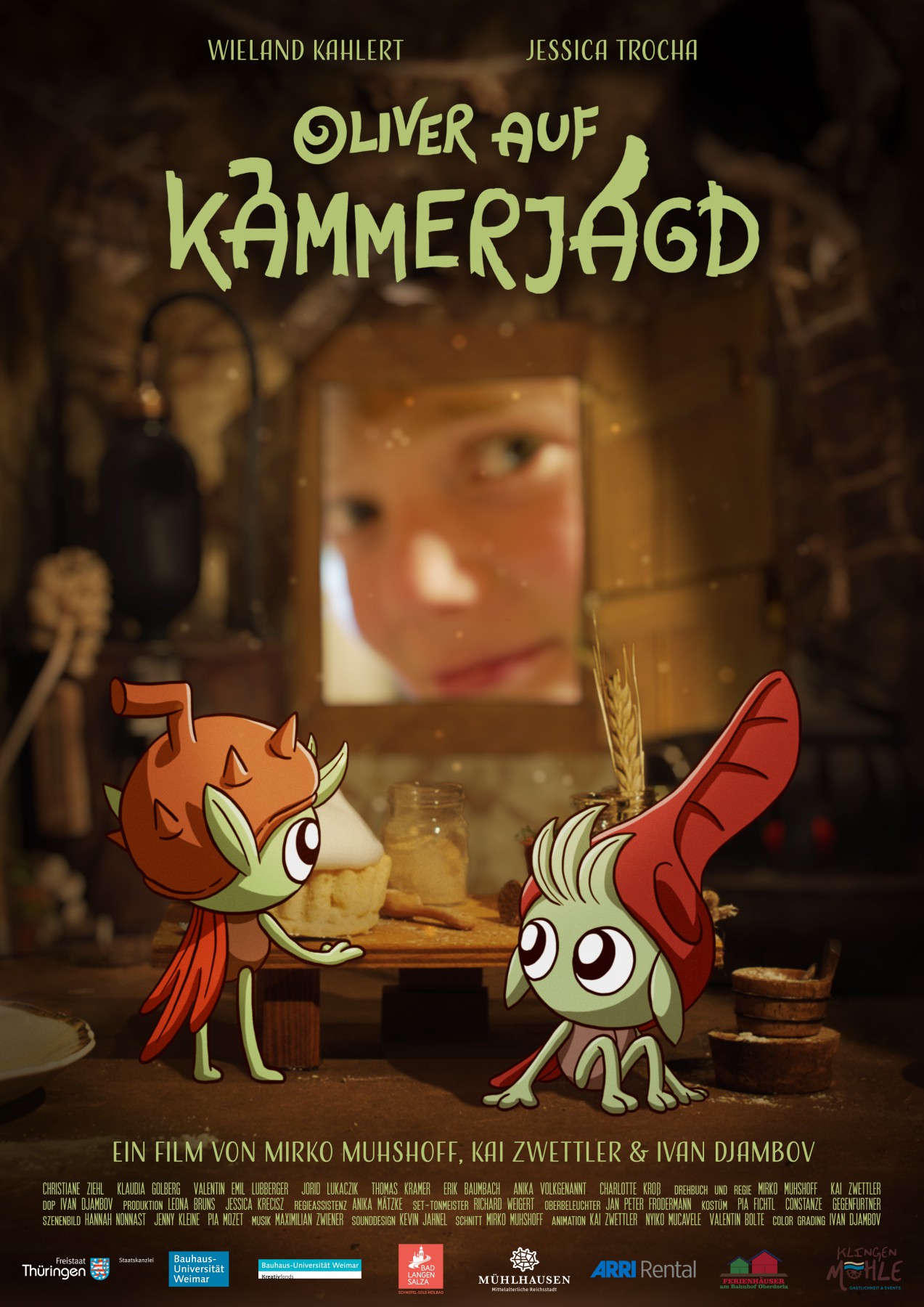
What are your plans and dreams for the future?
Ivan: Visualising and conceptualising innovative and fresh stories for cinema movies.
Mirko: To make a longer children’s film or series. But also to try out the fusion of different genres and forms away from children’s media. Even if everything has already been told, there are still countless possible combinations that we would like to try.
Kai: I also want to take what we’ve learned from our thesis film and make a feature film or series for children. And if I had all the time in the world, I would immediately start working on a fully animated short film project that I had in the back of my mind for a long time now.
Follow them on social media!
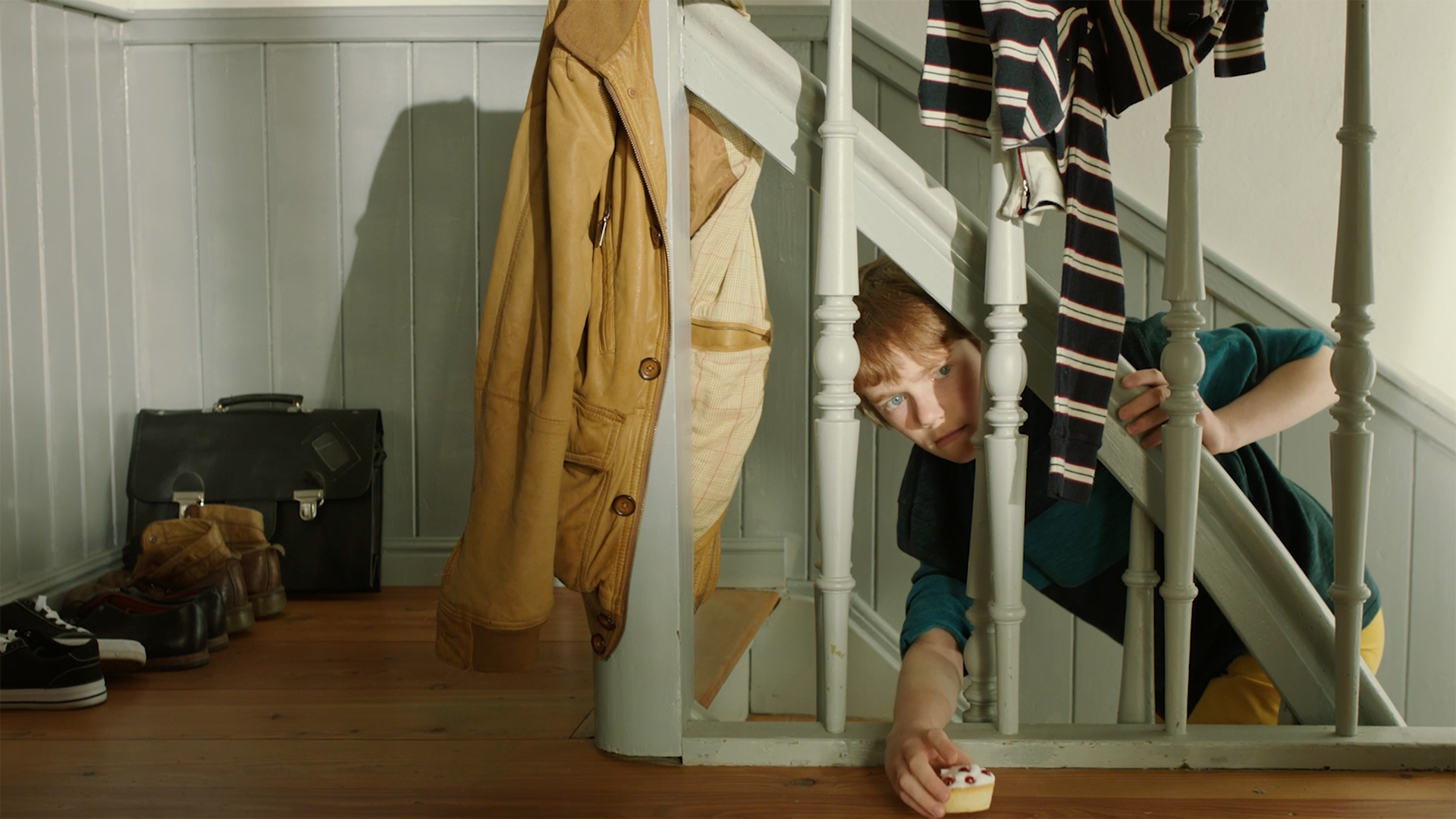
Back to T-Port Blog

